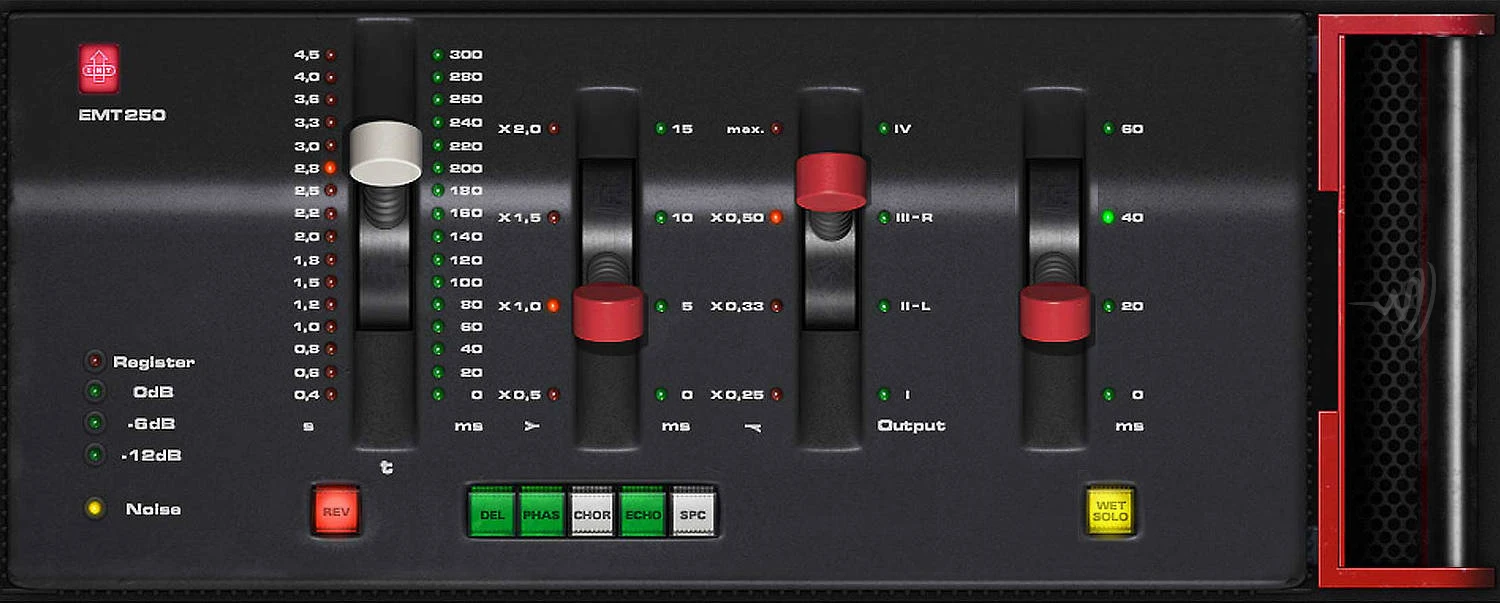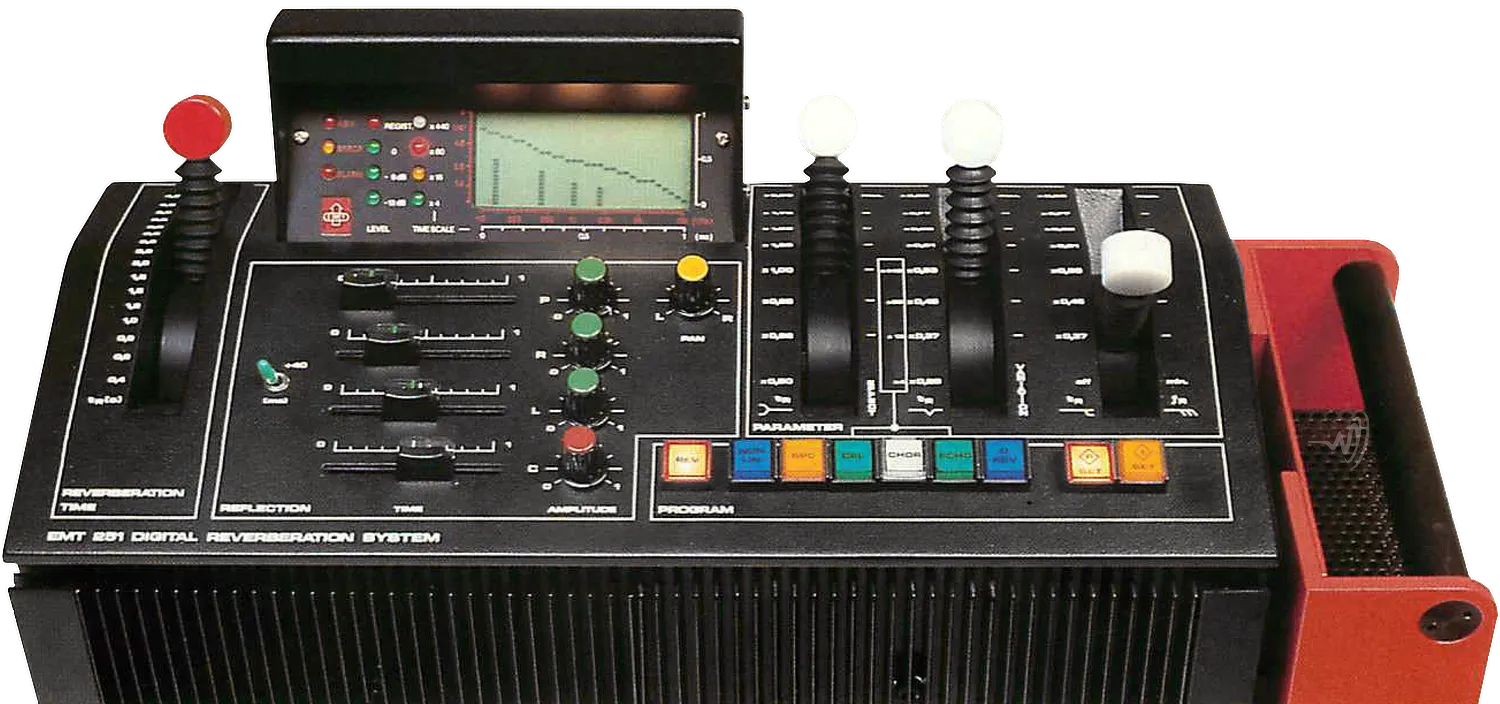The EMT 250 Digital Reverb is completely electronic, with no moving parts: ruggedly built and insensitive to shock or vibrations…and a studio legend! Extremely versatile with many programming possibilities and adjustment of parameters. The EMT 250 Digital Reverb uses high-value digital words (12 bit, quasi 15 bit) to virtually eliminate intrinsic and quantising noise.















